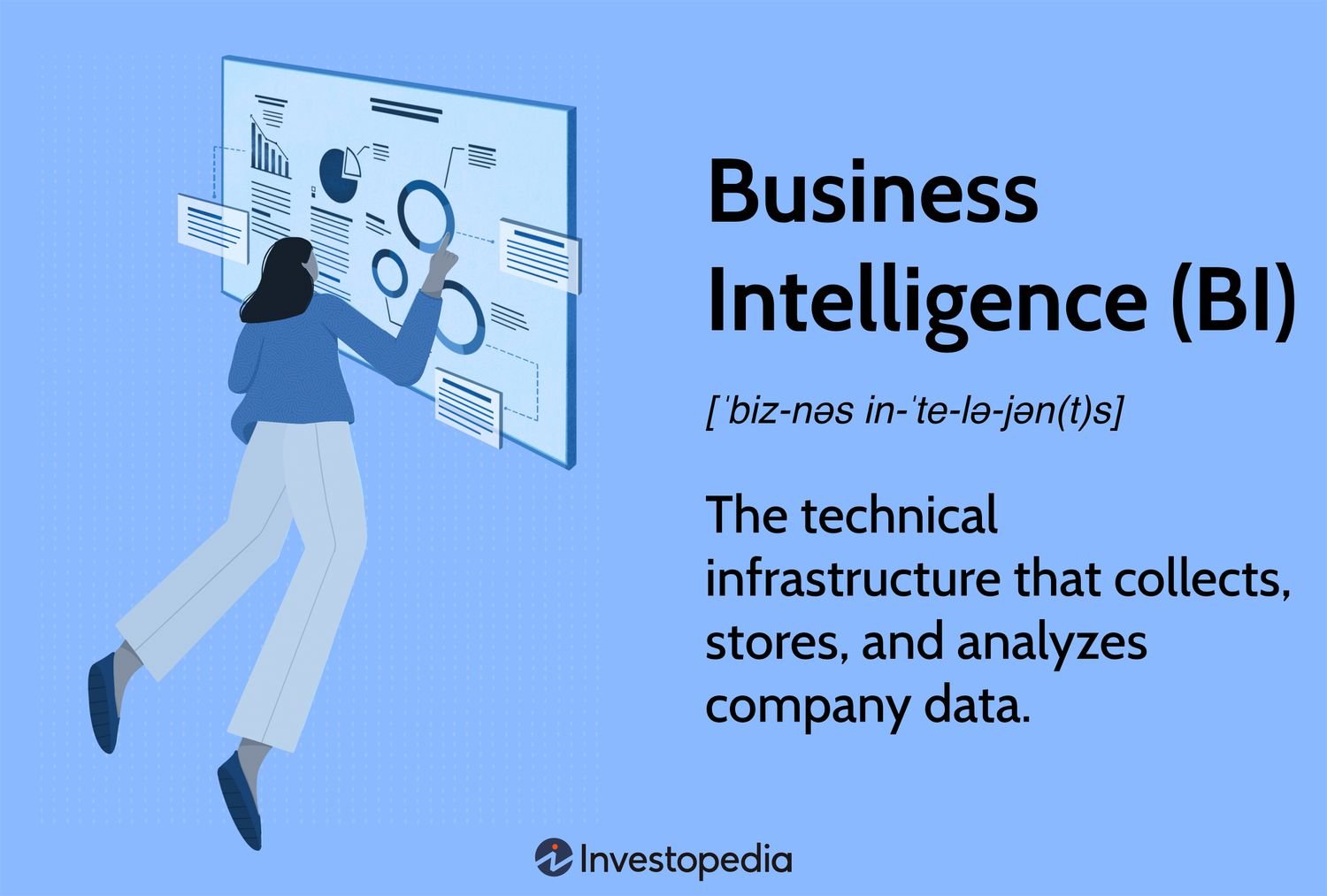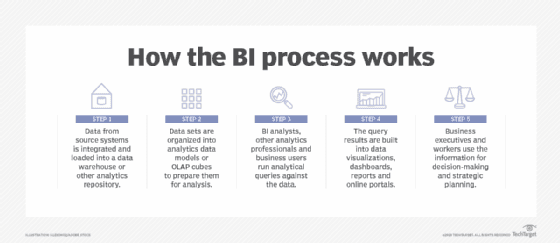Power BI Tutorials
Written By: Sajagan Thirugnanam and Austin Levine
Last Updated on October 1, 2024
In today's fast-paced and data-driven business landscape, staying ahead of the competition requires more than just good instincts and guesswork. It demands a strategic approach fueled by accurate insights and informed decision-making. This is where business intelligence (BI) steps in, wielding the power to unlock a competitive advantage that can transform your organization's trajectory.

Source : investopedia.com
Now let's discuss some key components of an effective BI strategy, that work together to deliver valuable insights and a competitive edge. The most significant of them are the following:
data collection and integration
data quality management
data modeling and analysis
data visualization

Source : techtarget.com
By incorporating these essential elements into your BI approach, you can build a solid foundation for data-driven decision-making and gain a competitive advantage in today's dynamic business environment. Remember, an effective BI strategy is not just about implementing tools and technologies; it's about establishing processes, fostering a data-driven culture, and leveraging data as a strategic asset to fuel your organization's success.
With a wide range of options available in the market, it is important to carefully evaluate and choose the right BI tools to match the needs of your organization. Selecting the right business intelligence (BI) tools is a crucial step in harnessing the power of data for your organization's success. Consider factors such as:
scalability
ease of use
integration capabilities
cost
Start by assessing your organization's requirements and the type of analytics you need, whether it's focused on sales and marketing, financial reporting, or operational efficiency. Look for tools that can handle the scale and complexity of your data, offering robust performance and responsiveness. Your tool can be part of the modern data stack, which includes:
DBT
Looker
Snowflake
or part of a more traditional data stack such as:
SSIS
PowerBI
Related to Power BI Tutorials
